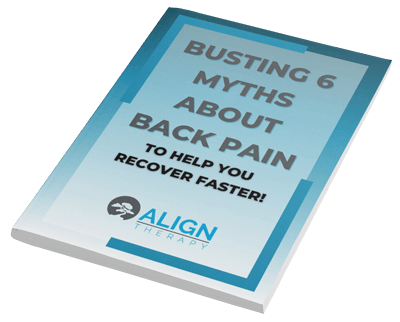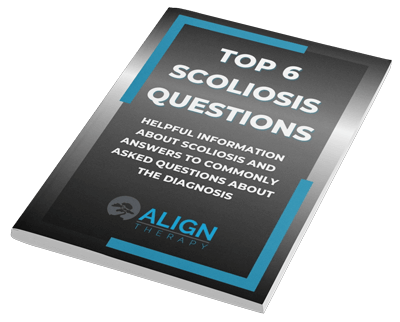When it comes to managing scoliosis, a condition where the spine curves abnormally to the side, strengthening the core is one of the most effective and natural approaches to supporting the spine. While scoliosis can range in severity, core stability and strength play an essential role in improving posture, reducing discomfort, and preventing further progression of the curvature.
In this blog, we’ll explore why core strength matters for scoliosis, how it supports spinal health, and provide practical exercises and tips to safely strengthen the core.
Understanding Scoliosis and the Role of the Core
Scoliosis affects people of all ages, from adolescents to adults, and presents in varying degrees. Whether the curve is mild or more pronounced, an unbalanced spine often leads to asymmetrical muscle development, uneven posture, and compensatory movements. This is where the core becomes critical.
The core includes more than just your abdominal muscles. It encompasses the deep muscles of the abdomen, lower back, hips, and pelvis. These muscles work together to stabilize the spine and pelvis during movement. A strong core supports proper alignment and balance, which is vital for anyone with scoliosis.
Why Core Strength is Crucial for Scoliosis
1. Improved Posture and Alignment
One of the primary challenges of scoliosis is maintaining proper posture. A strong core acts like a corset around the spine, helping to align and support it. This doesn’t mean “fixing” the curve but rather improving how the body holds itself against gravity.
2. Enhanced Spinal Stability
As scoliosis often causes instability in the spinal column, strengthening the core improves dynamic stability. It ensures that the spine is supported during movements such as walking, lifting, or even sitting for extended periods.
3. Reduced Compensatory Movements
When the core is weak, other muscles must overcompensate, leading to strain and fatigue. With scoliosis, this can worsen the muscular imbalance. Strengthening the core reduces the need for such compensations.
4. Better Balance and Body Awareness
Scoliosis often affects proprioception—your sense of where your body is in space. A strong core contributes to better balance and body control, reducing the risk of falls or further injury.
Best Core Exercises for Scoliosis
1. Pelvic Tilts
This gentle movement strengthens the lower abdominal muscles and helps align the pelvis.
How to do it: Lie on your back with knees bent and feet flat. Slowly tilt your pelvis to press the lower back into the floor, then return to neutral. Repeat 10-15 times.
2. Bird Dog
This movement engages the deep core muscles and promotes balance.
How to do it: Start on all fours. Extend the right arm and left leg at the same time, keeping your back flat. Hold for a few seconds, then switch sides.
3. Dead Bug
A fantastic way to challenge the core while keeping the spine in a safe position.
How to do it: Lie on your back with arms and legs in the air. Lower the opposite arm and leg slowly while keeping your back flat against the floor. Alternate sides.
4. Side Planks (Modified)
These target the obliques and help with lateral stability—important for those with scoliosis.
How to do it: Start on your side with knees bent and forearm under your shoulder. Lift your hips off the ground and hold for 10-30 seconds. Progress by extending the legs.
5. Breath-Focused Core Work
Techniques such as Schroth breathing or Pilates-style diaphragmatic breathing strengthen the core from the inside out.
How to do it: Sit or lie in a comfortable position. Inhale deeply, expanding the ribs sideways, then exhale slowly while drawing the belly inward.
Tips for Safe Core Training with Scoliosis
1. Focus on Form Over Repetitions
Performing exercises correctly is more important than doing many repetitions. Quality over quantity helps prevent strain and encourages proper muscle engagement.
2. Avoid Over-Twisting or High-Impact Movements
Some exercises that involve twisting the spine or high-impact actions may worsen scoliosis symptoms. Stick to controlled, low-impact movements.
3. Incorporate Unilateral Training
Because scoliosis often involves asymmetry, training one side at a time (unilateral training) can help correct imbalances.
4. Be Consistent but Gentle
Consistency is key to seeing improvements, but listen to your body. If an exercise increases discomfort or makes alignment worse, stop and consult a professional.
5. Work with a Scoliosis Specialist
If possible, seek guidance from a physical therapist trained in scoliosis-specific techniques like the Schroth Method. They can tailor a program to your unique curve and needs.
Incorporating Core Strengthening Into Daily Life
You don’t need to spend hours at the gym to build a stronger core. Here are ways to integrate core work into your daily routine:
- Stretch and Move: Take short movement breaks every hour to reset your posture.
- Sit with Support: Use a lumbar roll when sitting to encourage upright posture.
- Stand Tall: Practice gently engaging your core muscles when standing or walking.
- Use Breath: Incorporate breathing exercises throughout the day to activate the deep core.
Core Strength and Its Connection to Mental Health
Living with scoliosis can take a toll not only physically but emotionally. Engaging in regular, mindful movement through core exercises can:
- Improve confidence in movement
- Reduce stress and tension
- Enhance body awareness
- Provide a sense of control over your health
Feeling stronger and more aligned often translates to feeling better overall, which is especially important for those managing a lifelong condition like scoliosis.
Final Thoughts
Strengthening the core is a cornerstone of conservative scoliosis care. While it may not straighten the spine completely, it offers valuable support, promotes better posture, and empowers individuals to move through life with more confidence and stability.
At Align Therapy, we believe in helping people take charge of their health using natural, evidence-based strategies. If you’re ready to explore how core strengthening can be a part of your scoliosis care plan, we’d love to connect.
And if you’ve been following our social posts, you might already know—we have something exciting coming soon for those looking to deepen their understanding and take the next step in their scoliosis journey. Stay tuned!
Ready to learn more about our scoliosis services? Contact us at:
Lehi Clinic
📍 230 North 1200 East, #103, Lehi, UT 84043
📞 (801) 980-0860
St. George Clinic
📍 1054 E Riverside Dr, Ste 201, St. George, UT 84790
📞 (435) 222-7600
Or request a free consultation here: https://aligntherapyutah.com/free-consultation



